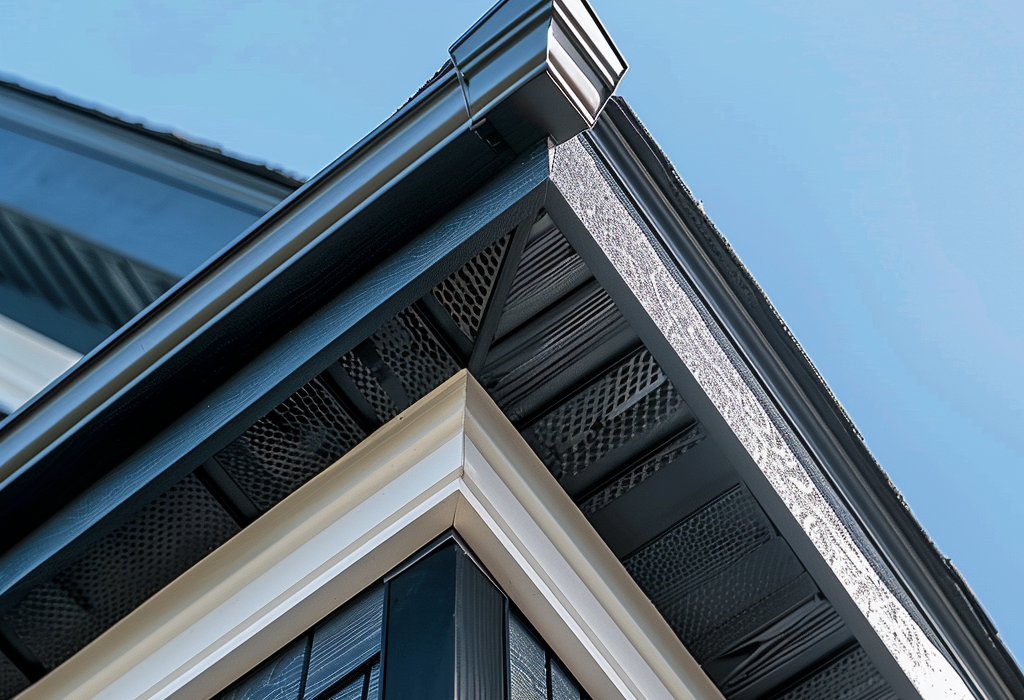The Significance of Attic Ventilation
Attic ventilation plays a pivotal role in maintaining the structural integrity and efficiency of roofing systems. Proper ventilation ensures a continuous flow of air, which helps regulate temperature and moisture levels in the attic space. This dynamic is crucial not only for the health of the roof but also for the overall energy efficiency of the home.
Benefits of Effective Attic Ventilation
Temperature Regulation
One of the primary benefits of proper attic ventilation is its ability to moderate temperatures within the attic and by extension, across the entire roofing system. During the warmer months, ventilated attics prevent the buildup of superheated air, which can warp roof decking and prematurely age roofing materials like shingles.
Moisture Control
In cooler climates, ventilation helps reduce the potential for ice dam formation by maintaining a cool roof temperature. Additionally, it prevents moisture accumulation that can lead to mold growth and wood rot, which compromise the structural integrity of the roof and the attic.
Energy Efficiency
A well-ventilated attic contributes significantly to reducing cooling costs in summer. By minimizing heat accumulation in the attic, less strain is placed on air conditioning systems, making them more efficient and reducing overall energy consumption.
Prolonging Roof Lifespan
By controlling temperature fluctuations and moisture levels, effective attic ventilation indirectly extends the lifespan of roofing materials. The consistent internal conditions prevent the premature deterioration of shingles and underlayment, safeguarding the roof’s structural integrity.
Key Components of Attic Ventilation Systems
Intake Vents
Positioned along the soffit areas of the roof, intake vents allow fresh air into the attic. Ensuring that these vents are not obstructed by insulation or other materials is crucial for maintaining optimal airflow.
Exhaust Vents
Exhaust vents are typically located at or near the roof ridge and are essential for expelling warm, moist air from the attic. This type of vent works in conjunction with intake vents to facilitate the continuous air exchange necessary for effective ventilation.
Ventilation Balance
Achieving a balance between intake and exhaust ventilation is crucial for creating an efficient airflow dynamic. This balance prevents pressure differences that can either stymie air movement or force conditioned indoor air into the attic, leading to energy inefficiencies.
Common Ventilation Challenges
Blocked Vents
One of the most frequent issues with attic ventilation is blocked vents. Whether due to insulation, debris, or nests made by animals, blocked vents impede airflow and can quickly lead to increased temperatures and moisture levels.
Inadequate Vent Sizing
Inappropriate vent sizing can also compromise attic ventilation efficacy. Ensuring that vent sizing meets the specific needs of the space, based on roof size and local climate, is essential for optimal performance.
Maintenance
Regular maintenance checks are vital to ensure that attic ventilation systems remain effective. These checks help identify potential blockages or damage to vents that might impair their functionality.
Conclusion
Incorporating proper attic ventilation is a critical aspect of roof maintenance that offers significant benefits, from enhancing the roof’s lifespan to improving home energy efficiency. For homeowners in Tulsa, OK, The Roofing Guys provide expert roofing services designed to optimize your home’s ventilation and protect your investment. Emphasizing proper installation techniques and regular maintenance, we ensure that your roofing system delivers both performance and longevity, safeguarding your home against common environmental challenges.

